Almost every gardener, a professional and an amateur, seeks to grow all possible and necessary vegetables on its plot. Pepper is the most popular, as it contains a large amount of vitamins and has a pleasant taste. Growing pepper - the process is not the easiest, but, once trying, then everything will be easily and simple. Under the conditions of our climate, the cultivation of pepper in greenhouses is optimal, as it refers to thermal-loving plants and very arrogant to watering and warmth. In this article, we will consider in more detail how to grow pepper seedlings for planting in the greenhouse, what conditions need to be created in the greenhouse and how to transplant the pepper into the soil.
Features of pepper and the benefits of its cultivation in the greenhouse
Pepper belongs to the family of grated, like tomatoes and eggplants. The birthplace of the pepper is the tropical areas of America, namely Mexico and Guatemala. For the first time, this plant was cultured in America, then the pepper was brought to Europe, in particular to Spain and Portugal. In Russia, grow pepper steel not so long ago, he was imported into the territory he from Turkey. To date, this vegetable culture is the most popular, many countries are engaged in the export of pepper. Among the leaders in this market can be noted China, Hungary, India.
The main features of pepper:
- Pepper is a thermal-loving plant, requires increased attention to the microclimate in greenhouses.
- It refers to one-year and herbaceous plants.
- The height of the pepper coistic on average reaches 25 cm.
- Appearance of peppers: a fragile stem that rolled up at the base; It has many side shoots, so many varieties require trimming to increase yields.
- Pepper leaves have a bright green color, in shape they are egg-shaped oblong. Grow single or outlet.
- Pepper blooms throughout the entire period of life with white small flowers, single or collected in bundles.
- Pepper fruits have different sizes and shape, it all depends on the variety. Color can be red, yellow and green, white and orange.
- Pepper seeds are inside the fetus, the vegetable itself refers to self-polished plants.
- There are several types of pepper: pod, salad Bulgarian, chili peppers, cylindrical vegetable pepper (cone, tomatoid, bell-shaped vegetable pepper).
Each type and variety of peppers have their own characteristics, which will depend on the conditions of cultivation in a certain climate. On more part of the territory of Russia, pepper is possible to grow in a greenhouse, in the southern regions it is possible to grow in open ground.
Advantages of pepper growing in a greenhouse:
- The use of greenhouses for growing peppers contributes to the receipt of a rich harvest.
- It becomes possible to get larger fruits.
- Vintage is going throughout the life of the plant.
- You can plant more crop and unusual pepper varieties, which cannot be raised in the open ground.
- This method of planting will be able to provide you with a large harvest, while saving on purchasing vegetables.
What variety of peppers choose for landing in a greenhouse
The most important and initial stage is the choice of the desired variety. Our gardeners are the most popular and acute peppers, which are grown in a large amount.
Depending on the variety, the size of the fruit, its shape and flavoring qualities will differ. Also, every variety has different yields and peculiarities. Usually, all gardeners professionals choose the ideal varieties for themselves by samples and errors, because everyone has their own preferences. Below we give a list of varieties of Bulgarian pepper and sharp, which grow perfectly in the greenhouse.
Bulgarian sweet pepper
Of the most popular varieties of Bulgarian pepper, the following can be distinguished:
- "Cockatoo". This variety of sweet peppers is an early and high-yield. Medium yield from one bush 2.5-3 kg. Fruits are large, cone-shaped, slightly bent, red or yellow. The average weight of one fetus is 500 grams.
- "California Miracle." Refers to medium-grained varieties. Fruits are large in the form of a prism, have a bright red color.
- "Orange Miracle." This hybrid variety of sweet peppers refers to early maturation. Fruits have a cubic shape and bright yellow.
- "Alenushka". Refers to medium-grained varieties, fruits have a pyramid shape with a truncated end. Peppers have bright red.
To the varieties of acute pepper, which grows perfectly in the greenhouse, the following can be attributed:
- "Astrakhan". Refers to medium-grained varieties. Fruits have a dowel cone shape with a coarse sharp pulp.
- "Ivory trunk". This is a medieval variety that has the fruits of an elongated cone shape, which resembles a trunk. Fruits have medium sharpness.
When choosing a variety of peppers, you need to adhere to some rules:
- Do not buy seeds, focusing only on a bright packaging. Look at the manufacturer and on the peculiarities of growing.
- Choose varieties that are grown in your area. More likely to get a rich harvest.
- If you decide to shut sweet and sharp peppers, they must be grown separately. Since they are self-polls and all pepper will be bitter.
Growing pepper seedlings in a greenhouse
Pepper is possible to grow only by a seaside way. There are two ways to receive seedlings: growing in cups or boxes, growing seedlings in a greenhouse. The main in this process is to prepare seeds and their sowing.
Preparation and seeding
Seeds can be purchased already processed and disinfect. If you yourself get the pepper seeds, they must be processed.
- First, take high-quality and full seeds. To do this, make a saline and pour seeds into it, leave for 10 minutes. Seeds that surfaced unsuitable for sowing. You need only seeds that stayed at the bottom. They need to get and dried.
- Then the seeds need to disinhibit. To do this, they are soaked in a 1% solution of mangartages for half an hour. Then washed with water.
- Then you can process seeds in stimulants of the growth of "Albit", "Zircon".
- The last step will be soaking seeds wrapped in gauze for their germination.
Cultivation of seedlings in boxes
Next, the seeds must be sowed into small plastic cups or boxes filled with soil mixed with peat. Sow seeds to a depth of no more than 5-15 mm. Starting seeds should be at the end of February so that by the time of transplanting pepper in a greenhouse seedlings was 60-65 days.
Seeds are pouted with a small layer of soil and covered with glass or film to create a greenhouse effect. It is important to maintain the necessary temperature in the first 4 days - it is 30 degrees. Then you need to reduce the temperature to 18 degrees per week, and then raise again.
It is necessary to monitor the seedle and water in time. When two sheets appear, seedlings can be filled. To do this, use a water solution with urea and superphosphate. Then it follows the seedlings to dive into the individual pots to form a horse system.
Amateurs may have a question when planting peppers into a greenhouse from containers. It costs it when the seedlings are already 60-65 days and at the plant formed up to 16 leaves.
Growing seedlings in a greenhouse
Seying seeds in the greenhouse can be started at the beginning of March and later. For this, the wet compost is lit up on top of the Earth, then seeds are sewn. After that, some compost pour out and covers the seeds with glass and newspapers to maintain a certain climate. It is worth noting that the glass must be turned over every day.
For seeding, it is necessary to maintain a temperature of 21 degrees in the greenhouse. When the seedlings sprouts appear, they should be counted them into separate pots with peat and place a greenhouse. Mandatory at this stage feeding and abundant watering. The landing of peppers into the greenhouses is carried out in May when the seedlings strong enough.
Preparing a greenhouse for planting peppers seedlings
Basically, the process of preparing a greenhouse for planting peppers is reduced to the processing and fertilization of the soil. A prerequisite for obtaining a rich crop is well-fertilous and loose soils. If the soils in the greenhouse are severe, it is necessary to prepare a special mixture, which consists of wood overworked sawdust, manure and peat. Also worth adding wood ash to enrich the soil.
You should not add fresh manure to the soil, as it will contribute to the strong growth of foliage. And this, in turn, will muffle the growth of fruits.
The soil in the greenhouse should be switched and dissolved. After that, get into the formation of a ridge under the planting of peppers.
Also pay attention to the best of the game. Watch that the system of ventilation and heating function well. You can deal with the decontamination of the greenhouse itself before planting seedlings.
The process of planting pepper into a greenhouse
When the seedlings are quite strengthened and at least 12-14 leaves will appear on it, you can start planting peppers into a greenhouse.
Features of planting pepper into a greenhouse:
- It is necessary to prepare a bed. They need to be done at a distance from 1 meter, and here the wells themselves should be saved from 25 to 65 cm, it all depends on the variety of pepper. Be sure to follow the instructions so that the pepper bushes do not interfere with each other.
- The shoe depth depends on seedlings. If you have grown seedlings in pots - the pit should be 2-3 cm below the shape of the pot, if seedlings grew in the greenhouse - orient to the place of placement of the cotyledon.
- Transplant seedlings should be engaged in a cool day or in the afternoon.
- Be sure to pour holes before boarding.
- It is necessary to plant seedlings together with a room of the earth, since the pepper does not tolerate damage to the root system.
- After placing seedlings in the well, pour out the earth and a little tamper with your hands.
- After landing, it is necessary to shed a good water.
After proper landing, peppers need proper and constant care.
The main stages of pepper care in a greenhouse
Pepper is a thermo-loving and moisture-loving plant. Therefore, in the absence of one of the main components of its growth, pepper can stop growing and fron. And also the lack will cause the pepper begins to yellow in the greenhouse. Therefore, all the most important stages of plant care should be performed:
- Watering. Watering pepper in the greenhouse must often be carried out so that the soil does not have time to dispel. From the lack of moisture pepper can get burns. When growing pepper in a greenhouse, it is necessary to water it every day. Moreover, watering should be abundant. Watering is needed with warm and estimated water under the root of the plant.
- Loosening and mulching. The process of loosenings is carried out after irrigation to improve the inflow of air to the roots. After loosening, you can carry out mulching. As a mulch, use sawdust, bark of trees.
- Maintaining the necessary moisture of air. Pepper is a moisture-loving plant, so be sure to follow the moisture content in the greenhouse so that the pepper does not drop the wound. To maintain humidity, suitable for pepper growth, you can shed water and greenhouse glass water.
- Feeding fertilizers. Many lovers can interest the question than to feed peppers in the greenhouse. For full growth of plants, it is necessary to make special fertilizers per week. This is done during watering. You can use both folk remedies and special drugs.
- Lighting. Permanent lighting is very important. After the growing bushes, it is necessary to deal with the formation of bushes. For this, pruning side shoots. It is necessary to do it carefully, since the stem from pepper is very fragile and it can be easily damaging.
- Fighting pests and diseases. Even in greenhouses, peppers are susceptible to pest. Most often you can meet the TRU and the web tick. Therefore, you constantly need to carefully consider pepper leaves for the presence of pests. When they are detected, it is necessary to treat the plant with a carbofos. Also, the lack of moisture in the plant can develop a gray rot, which can lead to pepper death. Therefore, it is necessary to follow the timely irrigation.
By observing all these simple features of pepper care in a greenhouse, you will get a big and tasty harvest of healthy vegetables, which will delight you all the remaining year.

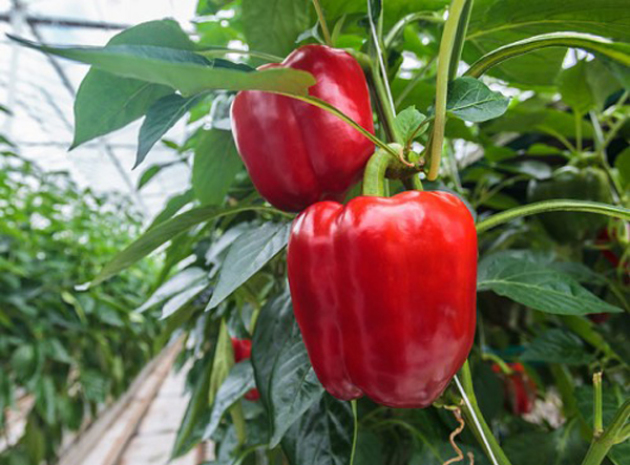
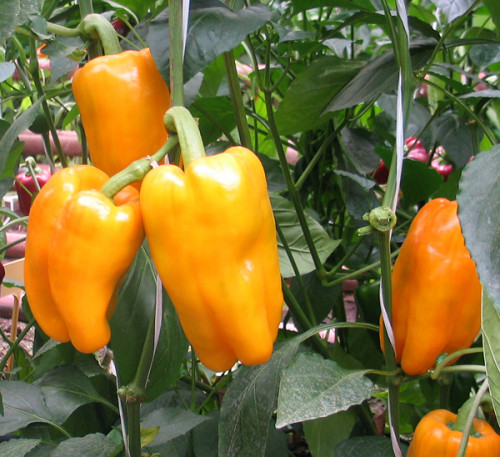
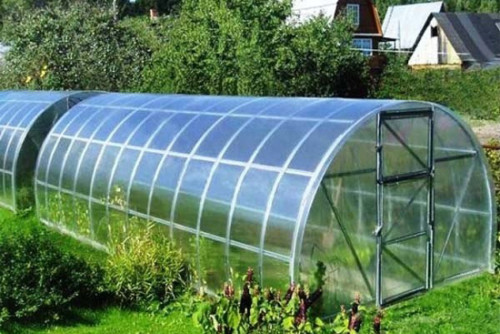
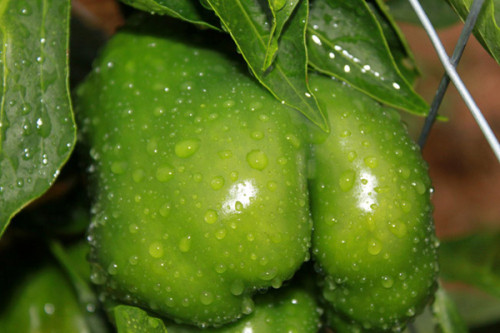
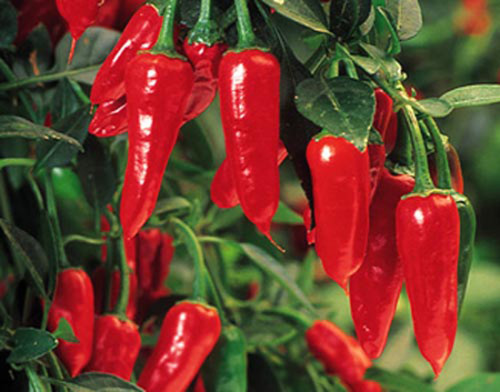
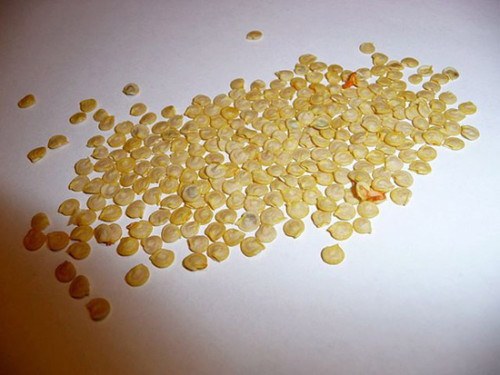

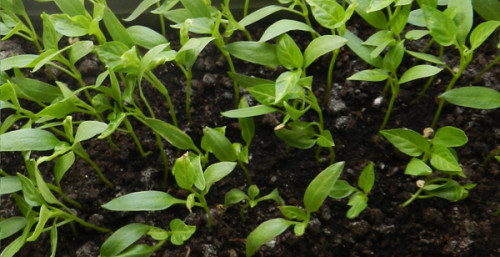
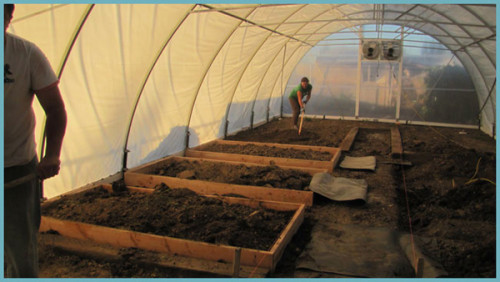
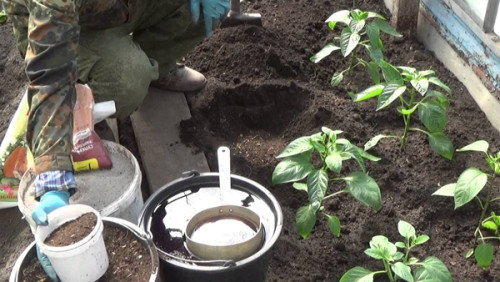
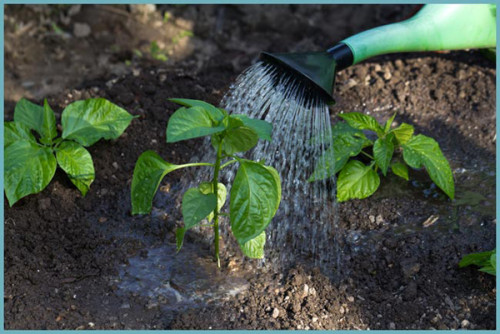
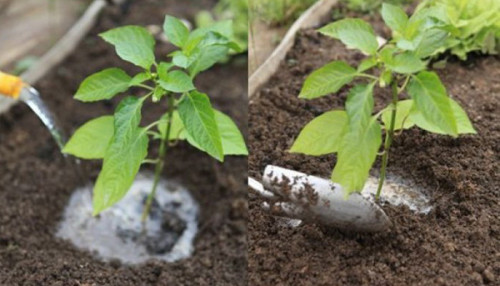












 Start a discussion ...
Start a discussion ...